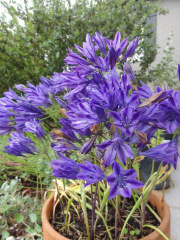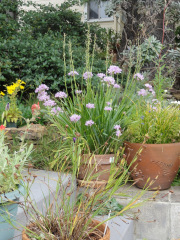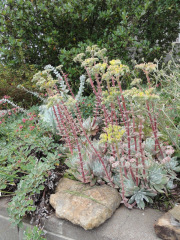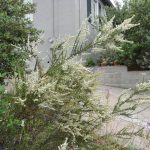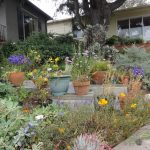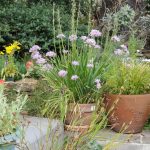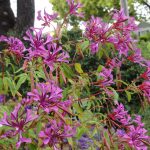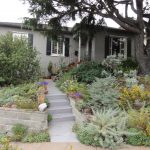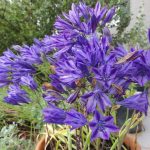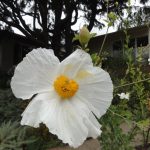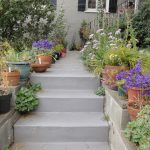Lot size: 2,100 sq. ft. front garden, 95% native
Garden Age: The native garden was planted in stages, beginning in 2004
Years on the Bringing Back the Natives Garden Tour: 3
Showcase Feature
Dave is the neighbor we all wish we had: affable, a good conversationalist—and a terrific gardener. Dave provides plants, seeds, advice, and inspiration to neighbors; he is why the Richmond Annex contains multiple native plant gardens just a few doors down from each other, and their owners share such a warm camaraderie. In spring, Dave’s garden contains masses of annual wildflowers, which reseed themselves at will; in summer the garden is abloom with swaths of rosy buckwheat, which the bees adore.Other Garden Attractions
• The yen for natives is spreading throughout the neighborhood! Saunter across the street to Anita’s and Margot and Pierre’s gardens, which are also on the Tour.
• Dave uses many native plants as food. Clarkia and gilia seeds are baked in muffins and cornbread, and he roasts brodiaea bulbs. (“They taste a little like sweet potatoes,” he says.)
• Hundreds of native bulbs—brodiaea, Ithuriel’s spear, and calochortus—bloom in spring.
Gardening for Wildlife
Annuals are allowed to go to seed, providing food and nesting material for wildlife. Little mulch is used, so as to provide nesting areas for ground-nesting native bees. Fifteen species of native bees visit the garden. In spring and summer hundreds of California native bees—bumblebees and other species—can be seen at once, gathering pollen from the rosy buckwheats. Painted lady and anise swallowtail butterflies are commonly seen. Salamanders and garter snakes call this garden home. Great horned owls hoot in the evenings.
Garden Talk
12:00 “Native American uses of California native plants” by Dave Drummond
2:00 “Native bees in your garden” by Rollin Coville, co-author of California Bees and Blooms


